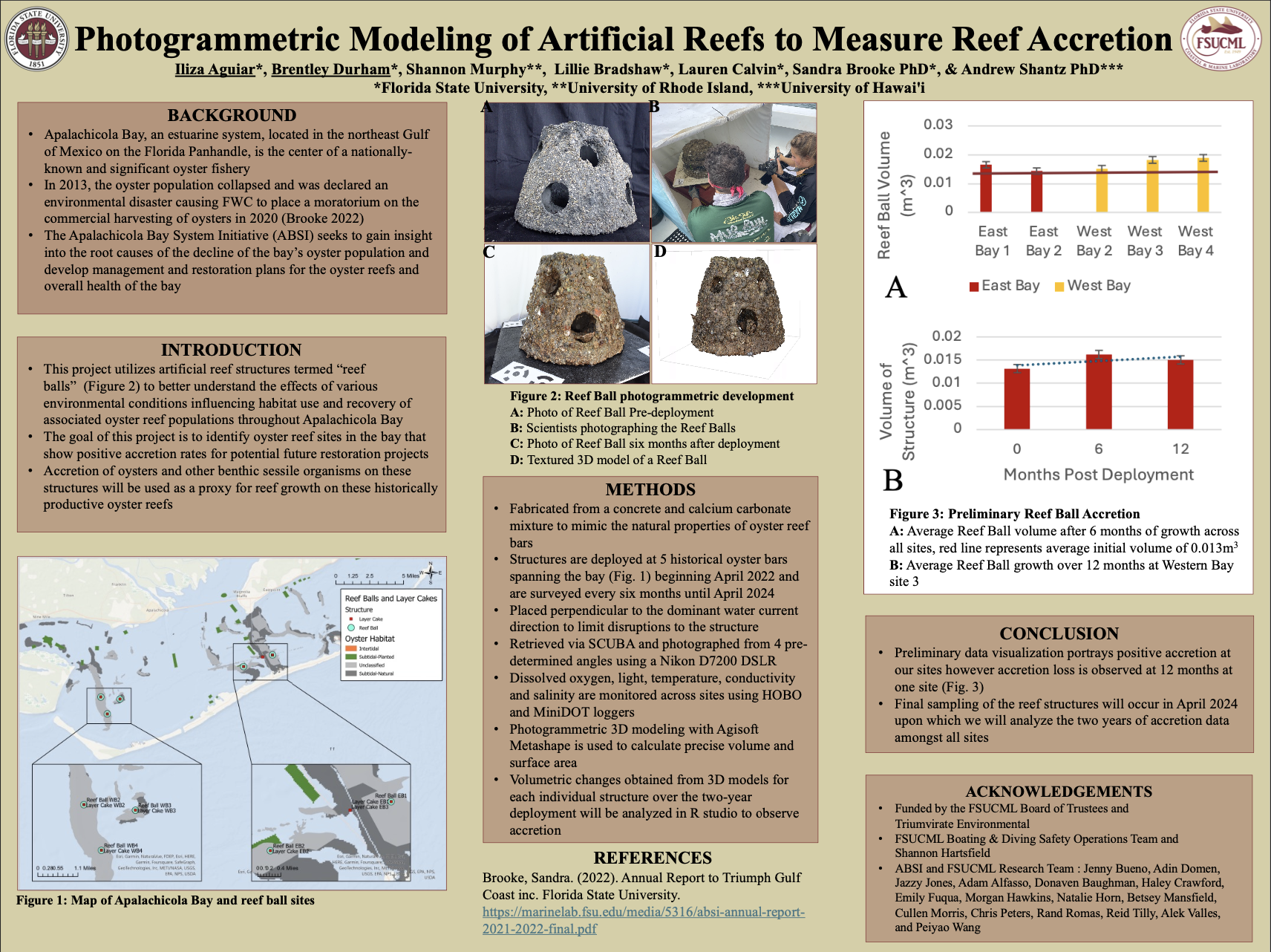Research Symposium
24th annual Undergraduate Research Symposium, April 3, 2024
Iliza Aguiar Poster Session 2: 10:45 am - 11:45 am/436

BIO
Growing up near the water, the ocean and its systems have always been a part of my life. It was not until my sophomore year of college that I realized that the sciences could become my career. My relentless curiosity for the intricacies of how nature works as a whole lead to me study Environmental Science. Through volunteering and further involvement at the FSU Coastal and Marine Lab, I have been able to become involved with marine science research spanning from oysters to sharks. After I finish my studies, I hope to work in field and lab settings conducting research for the state or abroad and be able to see nature all over the world.
Photogrammetric Modeling of Artificial Reefs to Measure Reef Accretion
Authors: Iliza Aguiar, Shannon MurphyStudent Major: Environmental Science
Mentor: Shannon Murphy
Mentor's Department: FSU Coastal & Marine Lab Mentor's College: Florida State University Co-Presenters: Brentley Durham
Abstract
Oysters are a foundation species in Apalachicola Bay, and they provide many ecological and ecosystem services to this productive and valuable ecosystem, including habitat for an array of commercially and ecologically important species. The oyster fishery in Apalachicola Bay collapsed in 2013 and oysters have continued to decline despite significant restoration efforts. Restoring the lost ecosystem services in Apalachicola Bay will require understanding the recovery potential of historically productive reef sites and if they can respond to restoration efforts by rebuilding essential habitat made of sessile organisms. The goals of this research are to provide insight into how quickly oysters and other reef species recruit and grow on artificial complex habitats. Artificial reef structures were deployed at 6 sites across the bay spanning a gradient of environmental conditions. These structures are being surveyed for recruitment of sessile organisms contributing to overall accretion and calculations of total volume every 6 months using photogrammetric techniques, for 2 years (ending in April 2024) to quantify accretion rates at each site. Data will be analyzed to understand how environmental conditions influence the colonization and growth of oysters and other benthic fauna across the bay. These data will help understand how environmental characteristics influence recovery of oyster reef associated communities and identify the most promising sites for successful future restoration efforts.
Keywords: Artificial Reefs, Restoration, Apalachicola Bay, Oysters, Photogrammetry


